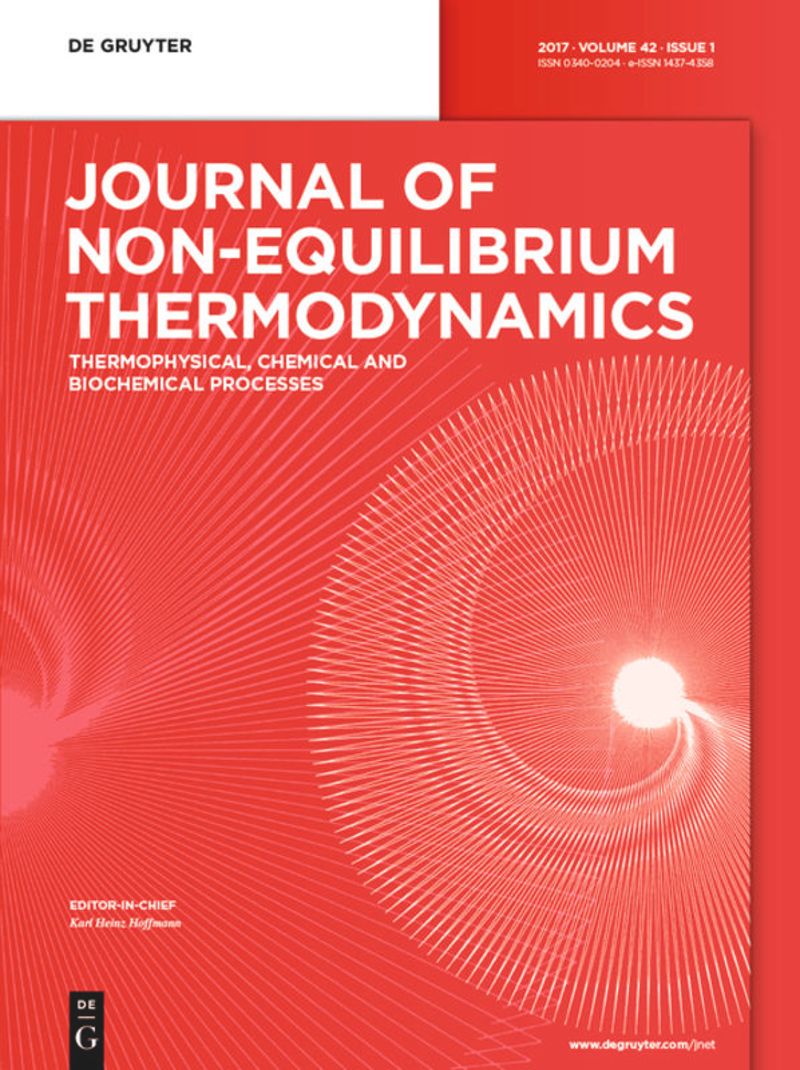Natural convection of a viscoelastic Cattaneo–Christov fluid bounded by thick walls with finite thermal conductivity
IF 4.2
3区 工程技术
Q1 MECHANICS
引用次数: 1
Abstract
Abstract The linear natural convection of a Maxwell viscoelastic fluid with Cattaneo–Christov heat flux constitutive equation, between two thick walls with finite thermal conductivity is investigated. The viscoelastic fluid and the heat flux have different relaxation times. The main interest is on the curves of criticality for different thicknesses ratio D and thermal conductivities ratio X. In the middle range of log X the curves of criticality stabilize depending on the other parameters of the problem. It is revealed that for some Prandtl numbers the curves of criticality remain higher for small X and lower for large X. However, increasing the Prandtl number this behavior is reversed. It is shown that this has important consequences in the order of the criticality curves when the heat flux relaxation time is increased. Depending on the Prandtl number, an increase of this relaxation time may decrease (destabilize) the curves of criticality until a minimum is reached, after which the curves start to increase (stabilize) again. For two different magnitudes of the viscoelastic relaxation time, the critical Rayleigh number, wavenumber and frequency of oscillation are plotted against log X for different magnitudes of D and the heat flux relaxation time.热导率有限的厚壁粘弹性Cattaneo-Christov流体的自然对流
采用Cattaneo-Christov热流本构方程,研究了具有有限导热系数的厚壁间Maxwell粘弹性流体的线性自然对流问题。粘弹性流体和热流具有不同的松弛时间。主要关注的是不同厚度比D和热导率比X的临界曲线。在log X的中间范围内,临界曲线随问题的其他参数而趋于稳定。结果表明,对于某些普朗特数,小X的临界曲线仍然较高,大X的临界曲线仍然较低。然而,增加普朗特数,这种行为是相反的。结果表明,随着热流弛豫时间的增加,这对临界曲线的顺序有重要影响。根据普朗特数的不同,这个松弛时间的增加可能会降低(破坏)临界曲线,直到达到最小值,之后曲线又开始增加(稳定)。对于两种不同大小的粘弹性松弛时间,对不同大小的D和热流松弛时间,用log X绘制了临界瑞利数、波数和振荡频率。
本文章由计算机程序翻译,如有差异,请以英文原文为准。
求助全文
约1分钟内获得全文
求助全文
来源期刊
CiteScore
9.10
自引率
18.20%
发文量
31
审稿时长
1 months
期刊介绍:
The Journal of Non-Equilibrium Thermodynamics serves as an international publication organ for new ideas, insights and results on non-equilibrium phenomena in science, engineering and related natural systems. The central aim of the journal is to provide a bridge between science and engineering and to promote scientific exchange on a) newly observed non-equilibrium phenomena, b) analytic or numeric modeling for their interpretation, c) vanguard methods to describe non-equilibrium phenomena.
Contributions should – among others – present novel approaches to analyzing, modeling and optimizing processes of engineering relevance such as transport processes of mass, momentum and energy, separation of fluid phases, reproduction of living cells, or energy conversion. The journal is particularly interested in contributions which add to the basic understanding of non-equilibrium phenomena in science and engineering, with systems of interest ranging from the macro- to the nano-level.
The Journal of Non-Equilibrium Thermodynamics has recently expanded its scope to place new emphasis on theoretical and experimental investigations of non-equilibrium phenomena in thermophysical, chemical, biochemical and abstract model systems of engineering relevance. We are therefore pleased to invite submissions which present newly observed non-equilibrium phenomena, analytic or fuzzy models for their interpretation, or new methods for their description.

 求助内容:
求助内容: 应助结果提醒方式:
应助结果提醒方式:


